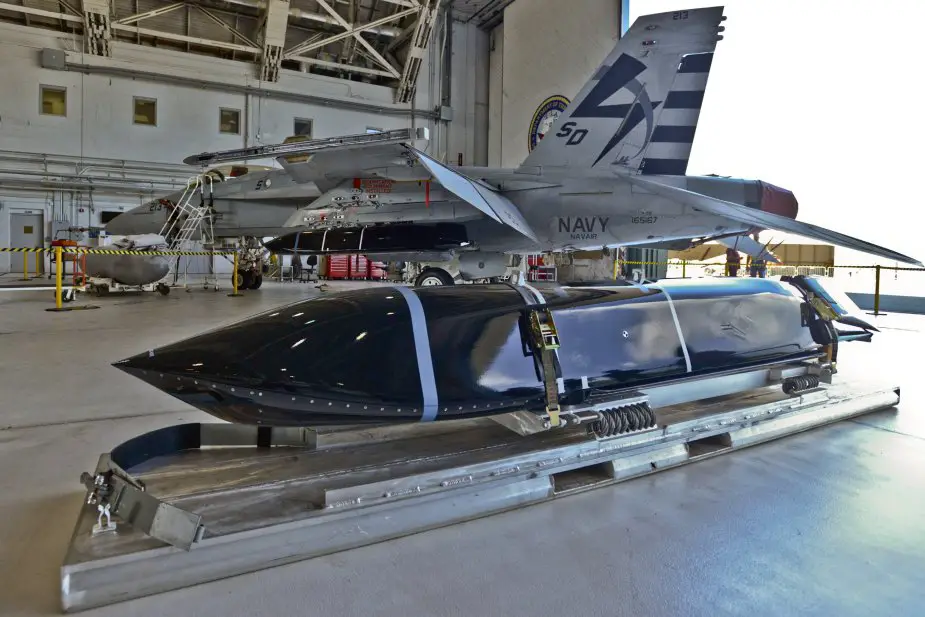Breaking news
Long-Range Anti-Ship Missile Achieves Operational Capability with Super Hornets.
U.S. defence company Lockheed Martin has delivered its first batch of Long-Range Anti-Ship Missiles (LRASM) to U.S. Air Force B-1B Lancer long-range strategic bomber units following the achievement of early operational capability (EOC) of the new weapon system, the company said in a December 18 statement.
 A LRASM missile in a hangar with a F/A-18E Super Hornet (Picture source: Lockheed Martin)
A LRASM missile in a hangar with a F/A-18E Super Hornet (Picture source: Lockheed Martin)
“After successfully completing the required integration, flight testing and modelling and simulation, warfighters accepted the first of many tactical production units, meeting key criteria for the EOC declaration milestone,” the statement reads. The LRASM is cleared now to launch from B-1B bombers. “The air-launched variant, integrated onboard the U.S. Air Force's B-1B, provides an early operational capability meeting the offensive anti-surface warfare Increment I requirement.”
The U.S. Air Force and Lockheed Martin last successfully test-fired two production configuration LRASMs from a B-1B over Point Mugu Sea Range in California in May. A previous test launch of an LRASM, officially designated AGM-158C took place in March 2018. Prior to that, the last test occurred in December 2017, which involved two LRASMs fired from a B-1B hitting a moving naval target.
LRASM is a precision-guided, anti-ship standoff missile based on the successful Joint Air-to-Surface Standoff Missile – Extended Range. It is designed to meet the needs of U.S. Navy and Air Force warfighters in contested environments. The air-launched variant, integrated onboard the U.S. Air Force's B-1B, provides an early operational capability meeting the offensive anti-surface warfare Increment I requirement.
LRASM is designed to detect and destroy specific targets within groups of ships by employing advanced technologies that reduce dependence on intelligence, surveillance and reconnaissance platforms, network links and GPS navigation in contested environments. LRASM will play a significant role in ensuring military access to operate in open ocean/blue waters, owing to its enhanced ability to discriminate and conduct tactical engagements from extended ranges.
Armed with a 1,000-pound penetrating blast fragmentation warhead, LRASM is low observable and likely has a range comparable with the Joint Air-to-Surface Standoff Missile Extended Range (JASSM ER) of around 500 nautical miles.
LRASM may soon find its way aboard the Air Force B-52 bomber and maybe, someday, aboard the Navy P-8A Poseidon.


























